SUMMARY
This is AI generated summarization, which may have errors. For context, always refer to the full article.
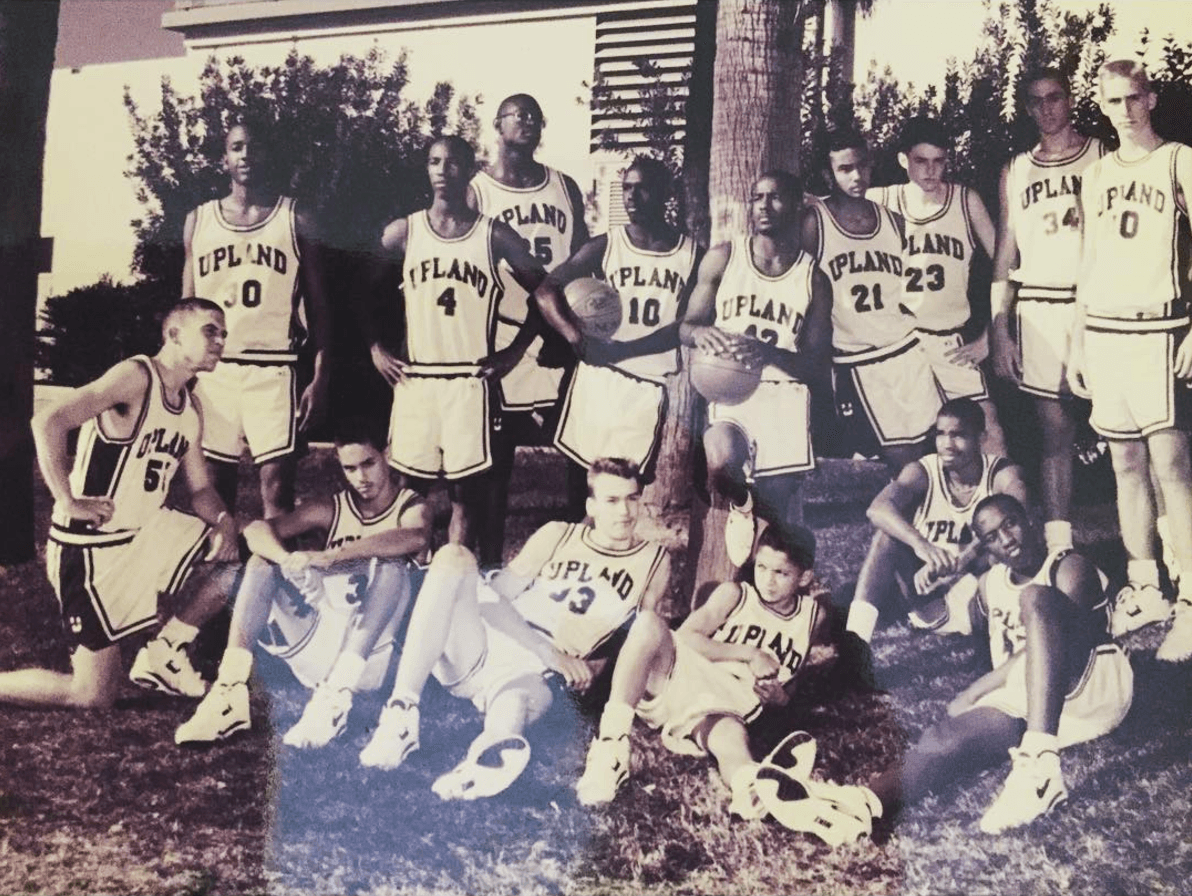
On a very early morning in 1993, a skinny boy about 5-feet tall and barely a hundred pounds woke up and made a decision.
“I’m done. It ends here,” the boy stubbornly thought to himself.
So he packed his gym bag, stuffed his jersey and shoes inside, and by 6:30 am the boy stood inside the Upland High School basketball coach’s office, a very dejected demeanor about him.
“Hey, coach, here’s my bag,” the boy gestured to the gym bag that represented his farewell to a sport he’d played since he was 3 years old.
Jeff Klein, the coach in his second year at the job then, was confused. “What’s this?” he asked his sophomore player.
“I’m done,” was the boy’s plain and simple response.
The little kid had made up his mind. Basketball would not be his life anymore. “You know what, coach, I’ve done everything that I could possibly can to get more playing time and it’s obvious that I’m not gonna play.”
The coach had not expected this from a young player he had high hopes for. But he saw through the frustration, and Klein knew exactly what he needed to say.
“Be patient. You gotta keep fighting…”
For over 10 years the visual of Jimmy Alapag, in his 20s and 30s, was him at 5-foot-9 and 160 pounds. It’s a fact of life that he’s a small player, hence the “Mighty Mouse” monicker.
But can you imagine him in high school?
Alapag’s first real obstacle was that his body could not match his mature mind or his bursting energy at the time, and it left him mostly on the bench. He became the player that crowds would demand the coach to put in towards the end of a blowout game, just so they could feel even better about the win.
But even as a boy, Alapag never let his height dictate his might. He couldn’t control that his body was small, “but he wasn’t gonna back down from anybody.”
“I can say that I might have feared for his safety at a certain point,” exclaimed Klein, “because he was so fearless. Oh he was tiny!”
Where his body couldn’t quite match up, he used words and plenty of actions. He was on the team because he clearly had talent and skills, although his small frame admittedly left much to be desired. But Klein saw something else there.
“The potential was that he was a loved kid. And nobody trained and worked harder. It was just the question of could his body fill out to take the punishment of playing a full 32-minute game,” Klein, Alapag’s high school coach, shared in a conversation with Rappler.
“When he was in 9th grade, although he was a young guy maybe on the freshman team, he was well-respected by all the older kids because his talent level was exceptional. And his verbal skills, you know, he just had great leadership skills. So he instantly had credibility within the group.”
As early as 9th grade, Klein already knew that Alapag was born to be a team captain – the first of many for Alapag. “He was everything that embodied what I wanted Upland High School to be.”
By the time Alapag reached Philippine shores in the early 2000s, he was more or less on the path toward the strong, well-built player we’ve known for years. That had plenty to do with his tremendous discipline when it came to rest, food, and the risks he took with his body.
The persistence he developed aided him, too, when he went through the lengthy and arduous process of getting cleared to play in the Philippines, being that he was a Filipino born and raised in the US. Alapag was discouraged enough that he was nearly forced toward a different basketball path – as the would-be first Asian Globetrotter, Klein recalled, referring to the world-famous Harlem Globetrotters, a traveling exhibition basketball team.
“He wasn’t making money and sometimes you’re really poor,” said Klein.
Eventually, he was cleared for the Philippine Basketball Association and was drafted 10th overall by the Talk ’N Text Phone Pals in 2003. “I think for his career it was great that at the right time the PBA entered and then he got drafted and the rest is obviously some pretty good history,” Klein rightfully noted.
Before it all made for remarkable stories, though, times were tough in 2003. Alapag struggled with being away from home, just like every other person who endeavors such a huge move. Fortunately, he had a friend to help him out.
“At the beginning we came in together. Basically we didn’t have anyone but each other as far as family,” Harvey Carey, Alapag’s longtime Talk ’N Text teammate, told Rappler in 2015 after Alapag’s first retirement. “We lived together our first year and went through the whole homesick thing together, and the ups and downs of a rookie.”
Carey, a forward who is still a key player for TNT, was in the same draft class as Alapag and was picked fourth overall. The connection was there with Carey hailing from San Francisco, California. “We were like brothers. Just confiding in each other. Basically being family to each other.”
For all of Alapag’s emotional turmoil trying to build a life for himself alone, thousands of miles away from home, he must have channeled it all toward basketball, because he confessed 2003 brought some of his most unforgettable career moments.
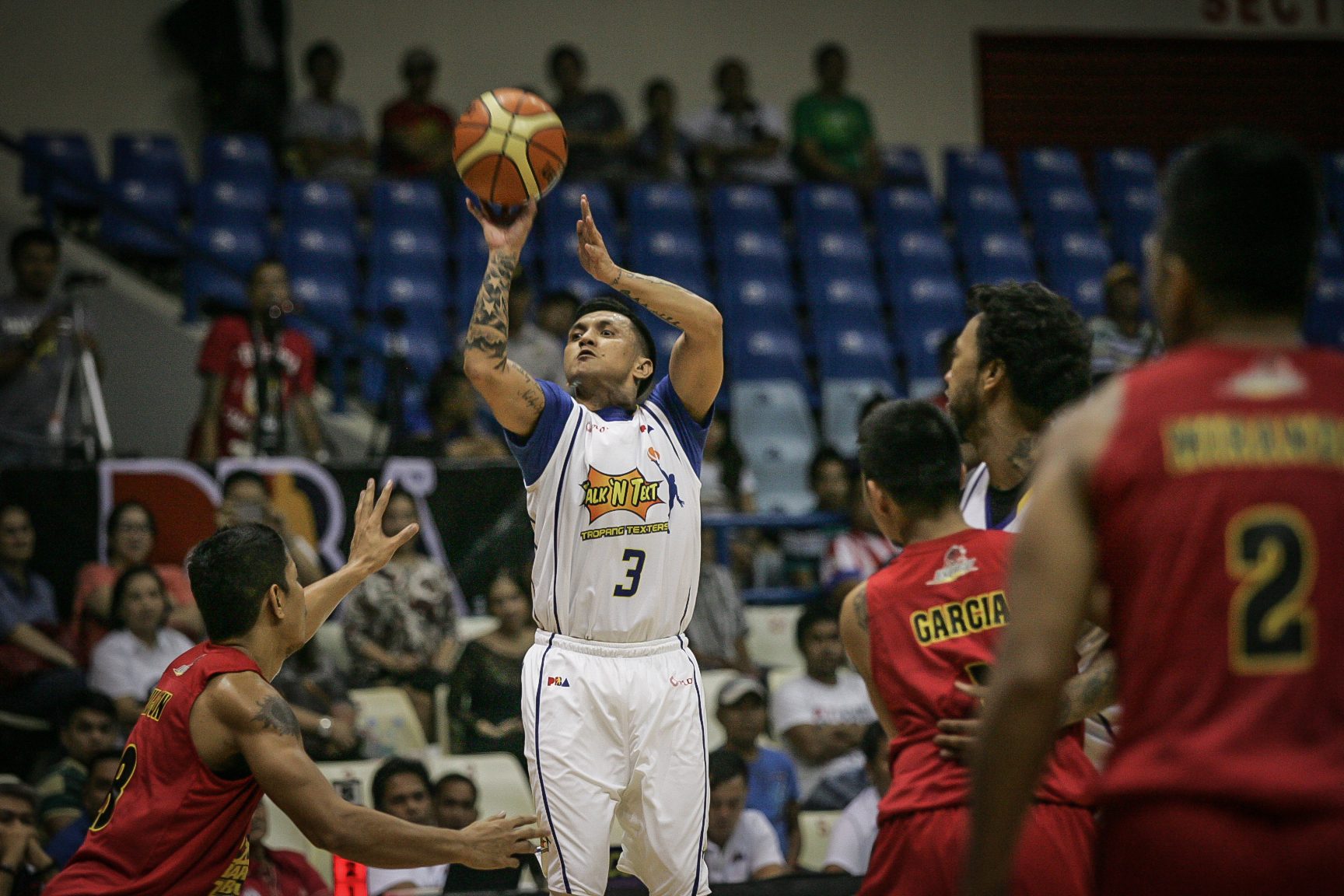
In his first season, he copped the Rookie of the Year award, won his first professional title during the All-Filipino conference together with Asi Taulava, was named to the first of his 11 eventual All-Star honors, became 3-point Shootout champion, and made it to the first of his 3 eventual Mythical First Team selections.
Alapag’s decorated 13-year playing career included a total of 6 PBA championships, a PBA Most Valuable Player plum in 2011, and a Finals MVP honor in the 2011 Commissioner’s Cup. He also led Talk ’N Text to a Philippine Cup Triple Crown from 2011 to 2013.
Beyond the accolades, 13 years in the PBA gave coaches, teammates, and the general Filipino public a chance to know Alapag as a man, and how his character off the court translated to his greatness on it.
“His selflessness,” responded Carey, when asked what he thought made Alapag an admirable person. “He really gets joy from helping others, on the court and off the court especially. He’ll give you the shirt off his back if he had to, to anyone. That’s one trait that is genuine about him.”
Alapag is known to be very patient with fans after games. He can be seen tirelessly signing autographs and posing for photos often up to the very last fan.
“The things he does will never come up in the stat sheet,” Carey asserted. “The type of person and player that Jimmy is, unless you’re there, it’s hard to describe. Just his presence with the team.”
“You’re gonna be the leader of the team…”
Klein’s office was the site of another memorable meeting in his fourth year as head coach of Upland High School’s basketball team in the mid 1990s.
Fifteen people crammed themselves into the room designed to accommodate only 4. The team had just played Glendora High School, one of the biggest games of the year. The agenda was to address the transgression of Orlando Huff, an eventual Seattle Seahawks linebacker in the National Football League. What happened next turned out to be a powerful harbinger of the future of Jimmy Alapag.
Huff was at the time juggling playing for the basketball and football teams, though for his first 3 years in high school he was strictly focused on basketball. He did not show up at the Glendora game in what Klein described was a “passive-aggressive thing, like he was saying, ‘you know what I’m a football player now. I don’t need this basketball.’”
Klein remembered Huff to be 6-foot-2 and 220 pounds of muscle and he had the potential for the NFL with a scholarship on the way. Huff was burnt out playing two different sports seasons, but still had a responsibility to the basketball team.
Huff’s physique and status as one of the toughest guys on the squad probably intimidated other teammates into silence during the meeting. But not the much smaller Alapag, Huff’s best friend whose approval he needed even as he towered over the Filipino.
“I’ve known you forever and for you to do this, Orlando, I am so disappointed,” Alapag spoke out to Huff then. “You are better than that. We’re your friends.”
The hulking 6-footer was reduced to tears.
“When Jimmy went at him I thought Orlando might grab him by the throat and just do who knows what,” Klein recalled. “But the respect Orlando had for Jimmy, that he hurt Jimmy, I’ll never forget that.”
Alapag called that team meeting, wanting to straighten things out with Huff. That was his year, after all, the year the team was his. Alapag was small and young then, but he had already earned so much respect as a leader and was never one who relied on intimidation. He simply led by example.

“When Orlando didn’t show we could’ve all went after him. But instead Jimmy challenged him,” Klein said. “And the way Jimmy put it, he rallied the team and then we achieved some great things in the playoffs that year. And Orlando was a big reason behind it.”
Alapag’s leadership later became his hallmark as a player through to the pros and, most important of all, in the Philippine national team.
Being 5-foot-9, 160 pounds, a point guard, a master of the 3-point shot, and unabashedly brave, Alapag was easily the archetype for a Filipino basketball player. His compatriots adored him for his daring exploits on international soil, doing the Pilipinas jersey every bit proud.
“A lot of players are very, very good individually on the court with their skills and you see a lot of players as well who leave their legacy because of their presence or their spiritual leadership. Jimmy is unique in that he was both,” said Chot Reyes, Alapag’s coach at Talk ’N Text and with Gilas Pilipinas.
“He was our leader both on the floor and off it. That’s why I think even in other countries or other teams you’re going to be hard pressed to find a Jimmy. I think that’s the kind of legacy he leaves.”
Alapag was the face of the Philippine team for the past decade. He officially hit legend status in the 2013 FIBA Asia Championship when he buried what is essentially Philippine basketball’s biggest 3-pointer of this era, driving a stake through the hearts of South Korea and simultaneously lifting a prolonged agonizing curse. Even more special was that he did it on Philippine ground, before raging, tearful home fans.
“With Jimmy, he’s taken that shot thousands of times,” coach Klein said, having seen that shot along with every other Alapag highlight out there. “A lot of people look at that shot or look at somebody taking it, and many people would maybe pass up that shot. Jimmy would never think about passing that shot. That’s what he’s dreamed about since a little kid.”
Alapag’s legend roamed not only in Asia but around the world when he led the Philippines in the 2014 FIBA World Cup in Spain. His shot against South Korea paved the way for the Philippines’ first World Cup appearance in 36 years, and also the country’s first World Cup victory (against Senegal) in 40 years.
After thousands of hours in training for many years since his youth, Alapag never crumpled on the world stage. Instead, he embraced the big moments and everyone turned to marvel at the little guy that could. His impact was such that he was named to the FIBA Players’ commission from 2014 to 2019.
“Jimmy was always a guy that when in front of people, when the lights were the brightest, would always perform,” Klein emphasized.
(LOOK BACK: The Mighty Captain: Jimmy Alapag makes his last dance count)
A quiet yet meaningful moment epitomized how far Alapag had come with the national team just as they arrived in Seville, Spain for the tournament.
“We were checking into our hotel and then we come in with Argentina and I think that was Greece,” Reyes recalled. “At the counter, Jimmy and I just turned to each other and looked like: ‘Hey, this is it. We’re here.’ And we gave each other a very hard handshake. I think those were the little things, those meaningful moments that only a relationship that we have can bring.”
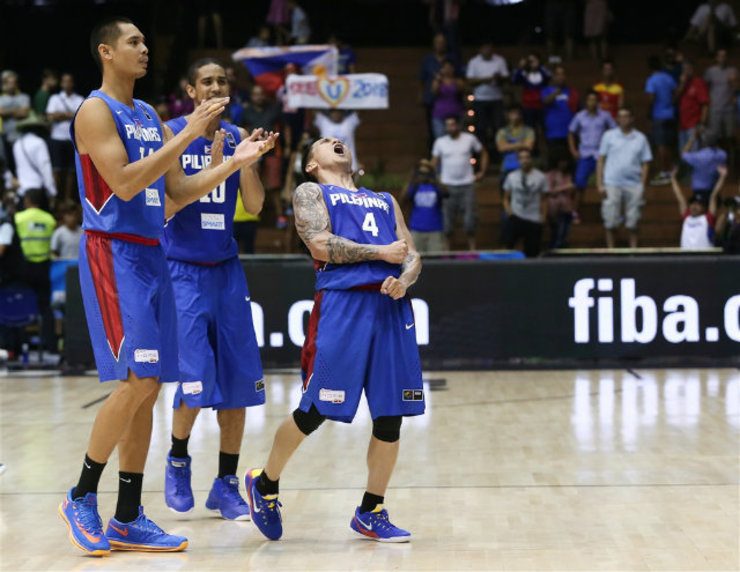
“You’re gaining valuable experience…”
Jimmy Alapag stood at center court of the Puerto Princesa Coliseum in March, 2015, struggling to speak through the tears. The entire Philippine basketball community was on its feet for “The Captain” as his number 3 jersey was retired by Talk ’N Text in an ultimate gesture of respect.
The realization that the once tiny kid people wrote off had made it that far was much too overwhelming for Alapag to contain. He went from shooting halfcourt shots and a barrage of threes with his brother to put on a show as a kid, to being surrounded by key figures in a then 12-year professional journey: Asi Taulava (his co-All-Star MVP in 2004), Chot Reyes, the entire Talk ’N Text family, and his wife LJ, who was just as if not more emotional than Alapag.
“Thank you for being not just a great basketball player but also a great man,” she said then. “I married a legend.”
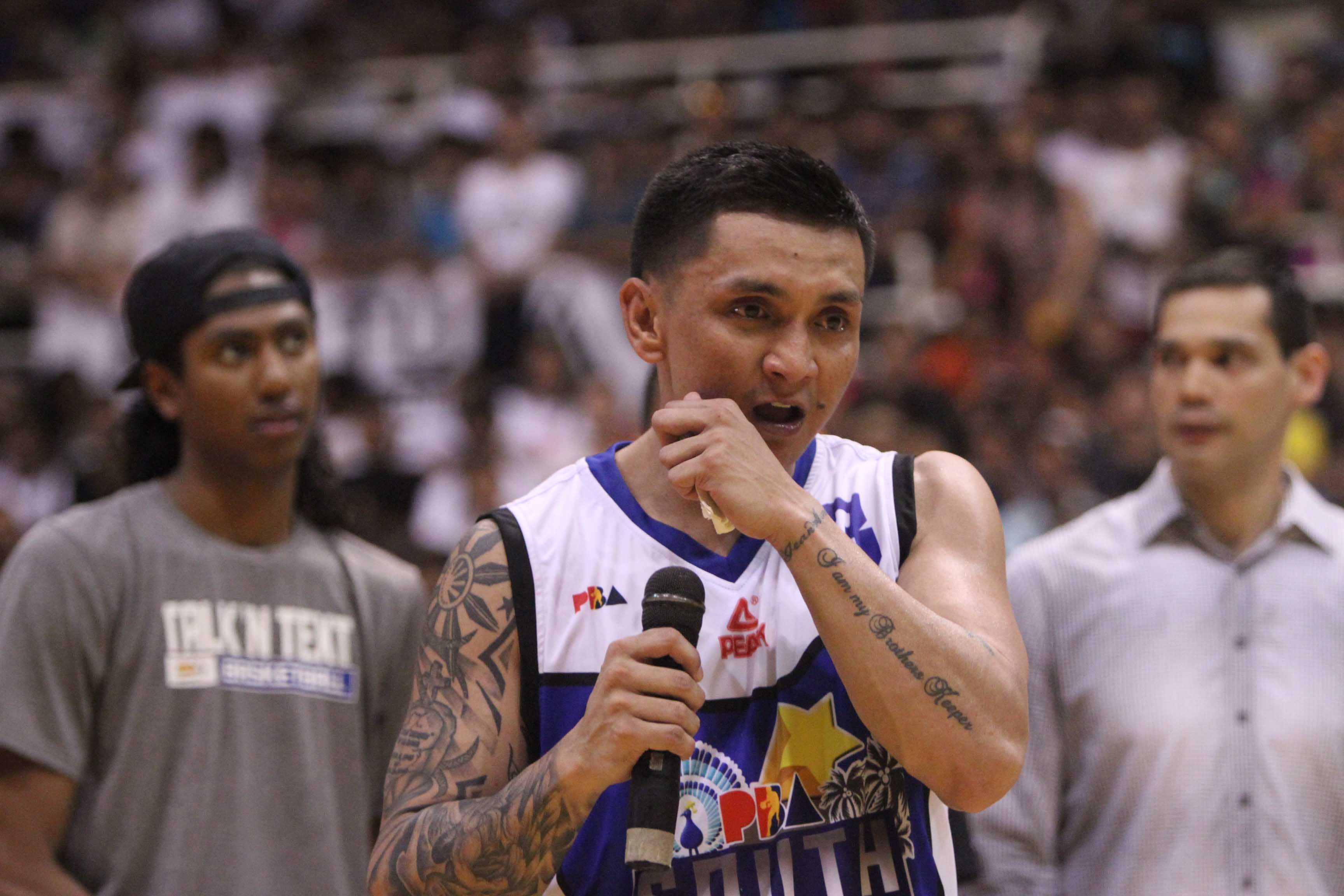
That was his first retirement. He couldn’t stay away from the game too long that after a short stint as team manager for TNT, he laced up his shoes again for one more run, this time with TNT’s sister team Meralco.
He brought leadership and veteran stability to coach Norman Black’s squad. In this comeback, Alapag relished the opportunity to pass on his wisdom to younger players like Chris Newsome and Baser Amer.
“Having Jimmy as a mentor is a blessing for sure. One of the main things I’ve taken from him is the work ethic that it takes to be a great player. What a real, true team leader actually is,” shared athletic swingman Newsome, who was introduced to the PBA by Alapag via email exchanges in 2009, and credits his improved jump shot to hours of work with Alapag before and after practices. Newsome also witnessed Alapag at work during his time playing for the Ateneo Blue Eagles.
“It’s not necessarily one that’s got to talk and just be a motivator or anything like that. It’s the work ethic that you put into your job that speaks for itself. He’s one of the hardest workers I’ve seen out here and when I first got drafted by Meralco, I told him, ‘Jimmy, anywhere you go, I’m going.’”
Alapag helped Meralco reach a franchise-first finals apperance in 2016. He even set a new all-time 3-point shooting record, before retiring for good after the season ended.
There was a different air to his last retirement compared to the first. It was more subdued, but also calmer and more peaceful, as if he knew it truly, finally was the right time to walk away. No regrets.
These days, Alapag’s roles include work as consultant to Meralco and assistant coach to the national team, where he still finds fulfillment mentoring the future of Philippine basketball and enlightening them with his past experiences.
“The minute he retired, he turned into a coach, the very next day he’s at the gym 3 hours before practice trying to help out anyone who wants help,” shared veteran Meralco swingman Jared Dillinger in 2016. “He immediately flipped the switch like it was nothing and he was coaching us, showing us pointers and tips.”
Alapag also enjoys getting cool dad points from letting his son experience the locker room and team atmosphere. Sometimes they put shots up together, or Alapag carries the young boy on his shoulders. It’s likely his roles as a father and a mentor blend in all the right ways.
“As a father he’s really good,” LJ told Rappler after Alapag’s first retirement. The couple is now expecting their third child. “He makes it a point that he spends time with our son. And the baby, he spends time with her at night going to sleep. With our son, he takes him to practice, or he takes him to the mall when he gets home.”
‘Jimmy was always a guy that when in front of people, when the lights were the brightest, would always perform.’
– Jeff Klein
Alapag’s legacy in the PBA is cemented by his inclusion into the league’s 40 Greatest Players list in 2015. But his deepest impact on Philippine basketball and the sport in general can be felt through up and coming players who grew up idolizing him, and through young kids everywhere who still look up to him. And it goes beyond the Philippines, too.
“I use Jimmy Alapag many times in my motivational speeches to say when you work hard, when the odds are against you, when people tell you maybe take up something else, when you don’t have instant success, you should never, ever give up,” Klein shared.
“Jimmy has fought through so much adversity. And to achieve the heights that he’s achieved is to me a testament to his hardwork and his character.”
Alapag is appreciated basically by everyone he meets.
“I’ve been doing this for 32 years, and I haven’t slowed down at all,” reflected Klein, who’s had 3 NBA players go through him and now coaches at Chaffey College, a short drive from Upland.
“And very, very, very infrequently do you come across somebody like a Jimmy Alapag, who” – he paused, exhaled, and searched for the right words – “I wanna say [has been] life-changing to not only the coaches around him but every person he meets. He makes an impact in people’s lives. So when I see the work that it’s taken for him to get to where he is, it’s just incredible.”
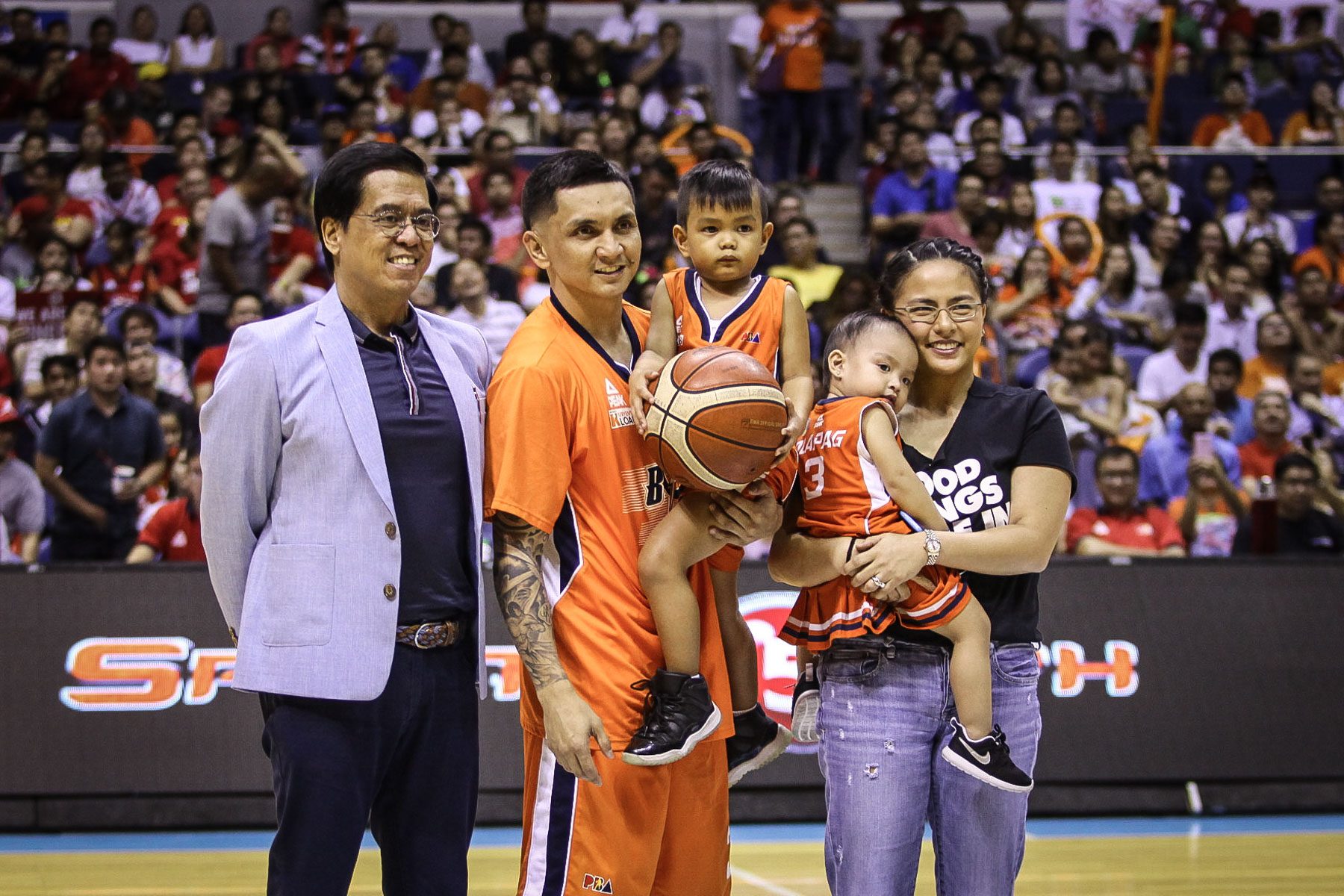
“Don’t let this go…”
One early morning in 1993, a skinny boy got up from bed and made a decision.
“I’m done. It ends here,” the boy thought to himself. So he lugged his gym bag to Upland High School and informed his coach, Jeff Klein, of a choice that at the time seemed barely consequential.
But Klein had plans for this little kid. And so he knew what he needed to say.
“Be patient,” the coach urged his sophomore player, fully believing this kid did not want to quit. He was simply feeling discouraged. “You gotta keep fighting. Something good will come out of this because I see how hard you’re working. You just got to keep pushing. Don’t let this go.”
For whatever reason, Klein refused to let this boy quit. Not on his watch. Especially not when so much potential was oozing out of his lanky, petite frame.
The conversation lasted maybe 15 minutes or 30, possibly less, possibly more. Inside the office that morning, Klein and this small boy spoke in a hollow space in time that was neither here nor there. Like the precise moment one teeters between sleep and consciousness; or the brief seconds at sunset or sunrise when it’s not quite day nor night.
It was a point in time that neither coach nor player realized would become a pivotal marker for a before and after in the boy’s life. The conversation ended with a vow.
“You’re gaining valuable experience,” the coach spoke once more, “I almost promise you, when you’re a senior, we’re gonna have a great team and you’re gonna be the leader of the team.”
‘That was really the only time in my life that I was convinced that I was gonna quit. And here I am, 39 years old and I’m not quitting. I’m walking away from the game for good.’
– Jimmy Alapag
A high school player – weighed down by the embarrassment of having his parents come to basketball games and watch him sit on the bench or play garbage minutes – was now faced with a tough decision.
This was not easy for a kid who had always been first to the gym at 6 am to practice on his own, and the last out to put more shots up, but still could not crack the rotation. It was especially difficult to envision any future in basketball when, at that point, the boy could look down on his tiny body and see how it refused to grow tall, never mind bulk up.
But Klein’s words mattered. That Klein chose the right words and opted to say it out loud essentially altered the course of history, because it made the boy change his mind.
In his second epiphany of that day in 1993, the boy did not quit, and he grew up to become the Jimmy Alapag we know now.
“That was really the only time in my life that I was convinced that I was gonna quit – in anything, in anything that I’ve ever done. It was a big moment for a young kid and I didn’t realize how much of an influence that decision would have on the rest of my life and it has,” Alapag, now retired for good, told Rappler of the pivotal moment.
“And here I am, 39 [years old] and I’m not quitting. I’m walking away from the game for good.”
In hindsight, with his entire playing career behind him, Alapag is certain that had he chosen differently, the Philippines would never have known him. Heck, even his wife wouldn’t have met him.
“It was a huge, huge thing that my coach wouldn’t let me quit,” he wistfully thought of the alternate timeline that might have occured.
“I probably would’ve graduated with my teaching degree and I probably would’ve been teaching at some elementary school somewhere in the States. I wouldn’t have met LJ and my life would’ve definitely taken a different turn. But things happen for a reason.
“Leaving the States to come here and play was one of the toughest decisions but looking back, it was the best decision I ever made,” he added.
Klein visited Alapag in the Philippines in the 2000s at the height of his Talk ’N Text career. He witnessed Alapag’s complete transformation into a legend, and to this day remains in awe of how his life turned out since his high school struggles.
“When I see Jimmy Alapag’s name, I get teary-eyed. He’s awesome,” a proud coach Klein said. “When Jimmy Alapag calls coach Klein, there’s nothing I wouldn’t do for him. I’m lucky to have him.”
“I’ll never quit again.”
Jeff Klein’s words were exactly what the young Jimmy Alapag needed to hear. So he mustered up every bit of strength he had left in him to mutter an “mhmm” and leave the office, his gym bag still in hand.
For as much courage it took for Alapag to walk into Klein’s office that morning in 1993 and admit he wanted to quit, it took even more to walk out the door and will himself to try again.
By the time Alapag returned home, it was as if his entire being had shifted.
“I’ll never quit again,” Alapag declared to his brother. “I’m gonna make this work. I don’t care how hard I have to work, I don’t care what I have to do. If I gotta play the game of basketball and practice ’til the sun comes up and ’til the sun goes down, I’ll find a way to make it work.”
Stick with it, Jimmy, the coach told the small boy in 1993. And he did. – Rappler.com
Add a comment
How does this make you feel?
There are no comments yet. Add your comment to start the conversation.